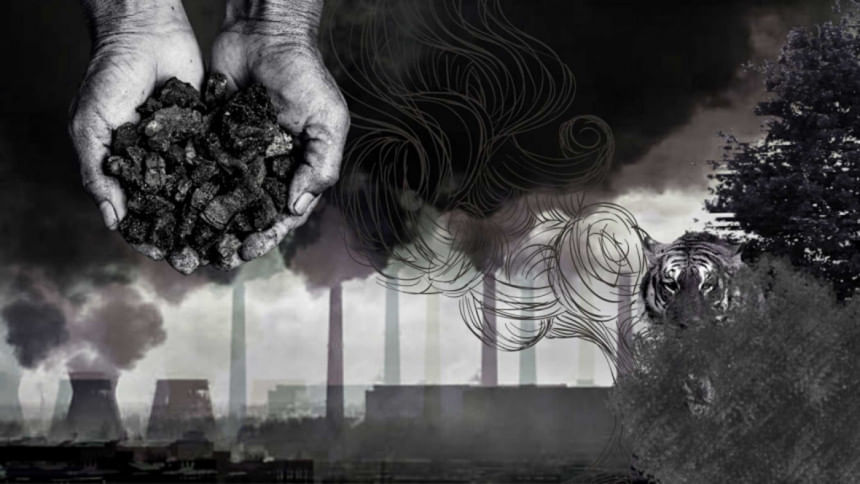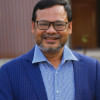In search of safe, affordable and clean electricity

Following the 2011 nuclear disaster in Japan's Fukushima, nuclear power's share in global electricity-generation saw a staggering decline from 13 percent to 10 percent. Should the trend continue, will nuclear power be of any consequence in the global energy mix of the future? If not, how will the world's electricity demand be met with nuclear power out of the picture? Can Germany, Italy, Japan and South Korea become partners in building the proverbial green "utopia" based on renewable energy?
As of today, a total of 443 reactors—including a Generation-1, 405 Generation-2, 36 Generation-3/3+ and one Generation-4—are operational in 32 countries. Another 46 Generation-3/3+ reactors are under construction in 17 countries. Plus, a total of 406 Generation-1 and Generation-2 reactors will reach redundancy between 2030 and 2040. On the other hand, Germany currently has eight reactors in operation, all of which will be shut down by 2022. Twenty-six reactors are already in their decommissioning stage. By phasing out its reactors, Germany will revert to the stage Italy is currently in. Japan and South Korea seem to be following suit. The United States saw the largest commissioning of reactors in the 1970s and has built a total of 104 reactors since. At present, the country has 94 reactors in operation. Only two reactors are currently under construction in the United States. If this situation continues, they, too, are likely to be dropped out of the list of nuclear power-producing countries by 2040 or 2050.
Russia, China, India, Hungary, and some newcomers like Turkey, UAE, Belarus, Bangladesh and Egypt are now building several reactors. But to increase power generation from nuclear fission, it is necessary to build more reactors to replace the reactors that will be shut down, which is not happening at the moment. Assuming no change in current trends, the production of electricity from nuclear power will decrease at an unprecedented rate between 2030 and 2040.
The cost of generating electricity from oil, gas and coal is soaring. Their stock is not inexhaustible. These fossil fuels are playing a major role in global warming. Research has found that nuclear power generation is far more economical and environmentally-friendly than other fuel sources. Due to the lack of public support and the risk of another accident (like the Fukushima 2011 one), developed countries involved in nuclear technology are not taking the initiative to build new reactors. The reactors that malfunctioned in the past were designed in the 1970s, with poor safety and of medium and large sizes (such as the Generation-2 reactors). But at present, large (and small) reactors with Generation-3+ and Generation-4 technologies are being built. The International Atomic Energy Agency (IAEA) has termed the reactors with a maximum capacity of 300 MWe as small modular reactors (SMRs). SMRs have improved safety features compared to large reactors. They have a natural heat dissipation system in the event of an accident, so the fuel will not be damaged and there will be no need for an emergency shelter. Other advantages include lower investment costs, a smaller volume of nuclear waste, reduced construction time, streamlined fuel cycle, simpler licensing and commissioning, power supply without long transmission lines in remote off-grid areas and cost reduction due to off-site factory integration and modular construction. There is no chance of accidents such as those in Chernobyl or Fukushima occurring. SMRs can be used to generate electricity as well as to produce hydrogen from wasted heat, or purify seawater and run heavy industries.
The concept of the SMR was introduced in 1954 with the launch of the US nuclear submarine, USS Nautilus. SMRs are attached to nuclear submarines. They were not produced commercially due to their smaller capacity to meet large energy demands. Reactors which are even smaller than SMRs are known as microreactors, with a maximum capacity of two to 10 MWe. These are now under development in the United States, the United Kingdom and Japan. Their use in the military-civilian field will be more attractive. Currently in operation are two SMRs in China, one in Russia and one in Japan, while another is under construction in Argentina. In the future, these reactors could be used as proven technology and reference plants. The design of many SMRs is in the approval stage in the United States, Canada, and even Germany, Italy and South Korea. Large and small entities have a vested interest to build SMRs and microreactors in 15 countries. Overall, the SMR market in the international arena is quite promising for almost all countries. However, to make the use of SMR more profitable, vertically-integrated mass production is required. For this, big international power utility companies have to come forward.
It is expected that multiple SMRs will be commissioned in many countries by 2040. The suitable place for these is in places where there are no power transmission lines. SMR is a very suitable technology for Bangladesh. It is necessary to include the SMR technology in the energy and power system master plan, and in the national nuclear power action plan. There is also a need to build a pilot plot of 10 MWe SMR with the participation of the Atomic Energy Commission, concerned universities, and power-related organisations. The purpose of this project would be to determine how to commercialise SMRs safely and sustainably.
If SMRs are successfully commercialised, we will no longer need coal-fired power plants. Even the 210 MWe steam cycle power plants—which are constantly being shut down due to lack of natural gas—can be replaced by SMRs. To this end, the suitability for setting up SMRs at these power plant sites can be verified. In addition, the Bangladesh Atomic Energy Regulatory Authority may seek the assistance of the IAEA to prepare the necessary regulations regarding the availability of their site licenses. At the same time, the relevant organisations may be instructed to take appropriate action regarding the nuclear fuel cycle. The recent COP26 conference has emphasised choosing SMR as a source of clean energy. My personal opinion is that two more large reactors similar to the VVER-1200 model could be set up at the Rooppur Nuclear Power Plant site without earmarking a construction site for large reactors in the southern part of the country. It will then be an easier, faster and more cost-effective project. Now, it is necessary to formulate a roadmap for setting up SMRs and microreactors nationwide and implement it accordingly. Only then will it be possible to supply reliable, uninterrupted, affordable and clean electricity for all.
Dr Md Shafiqul Islam is a researcher and writer, and a professor at the Department of Nuclear Engineering in Dhaka University.

 For all latest news, follow The Daily Star's Google News channel.
For all latest news, follow The Daily Star's Google News channel. 



Comments